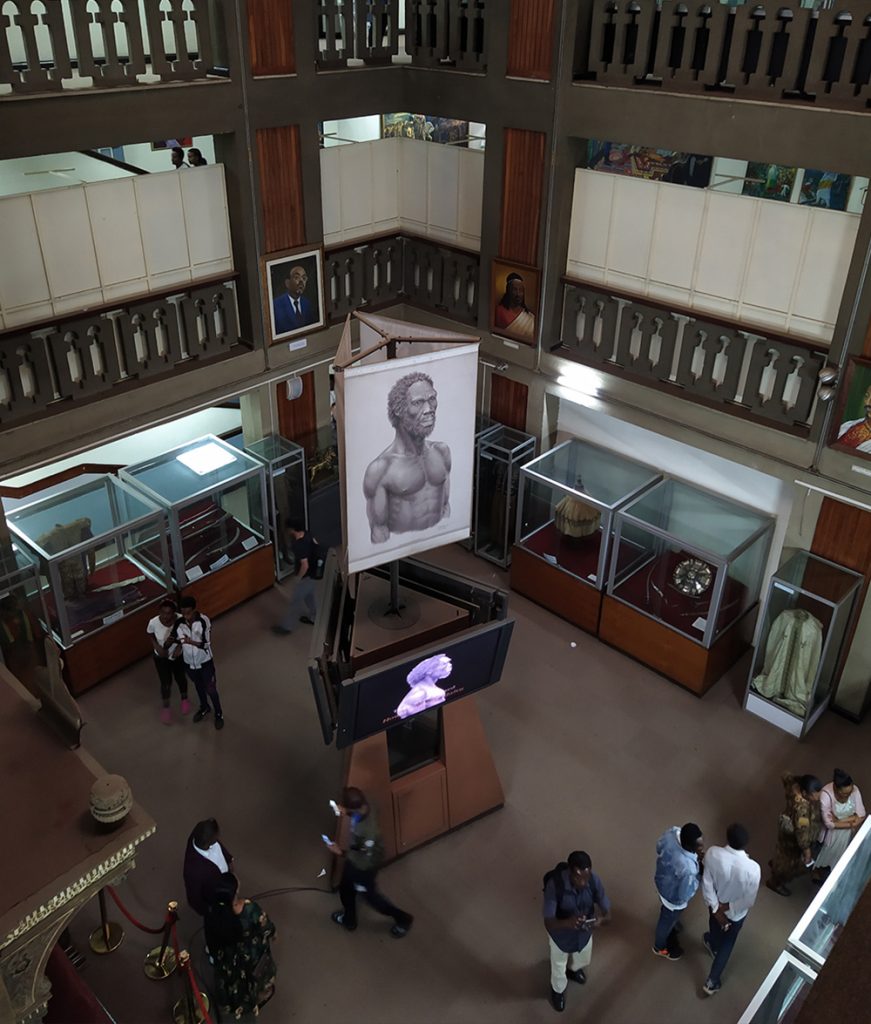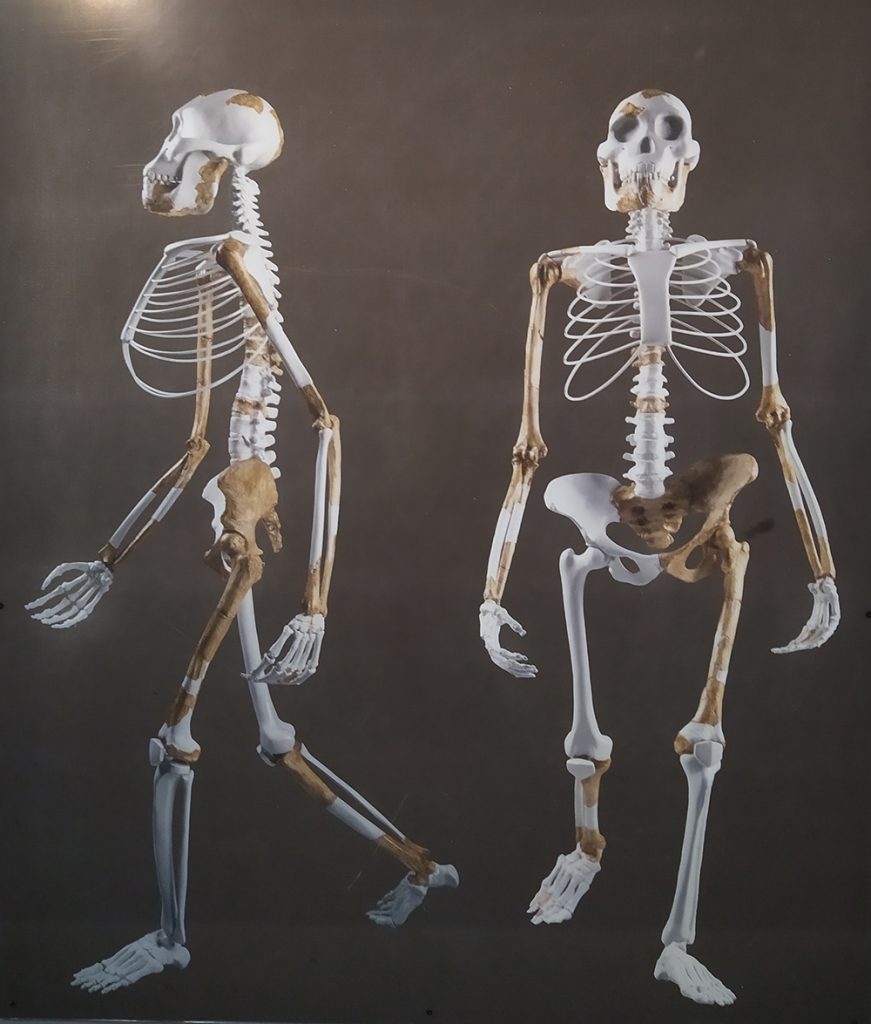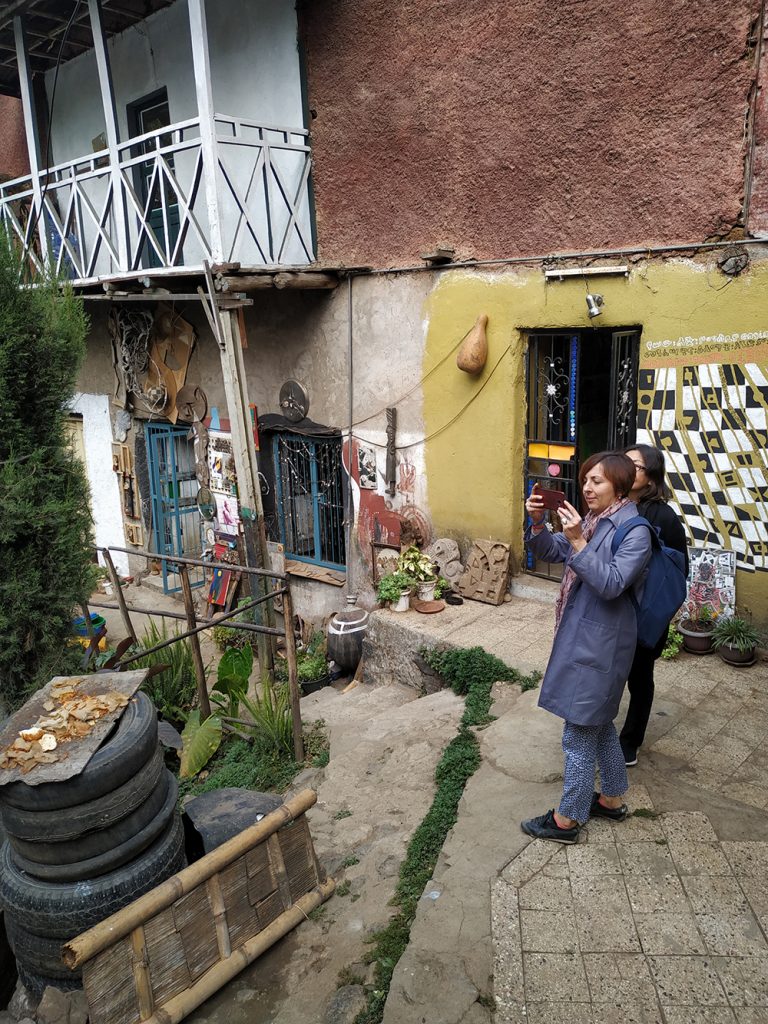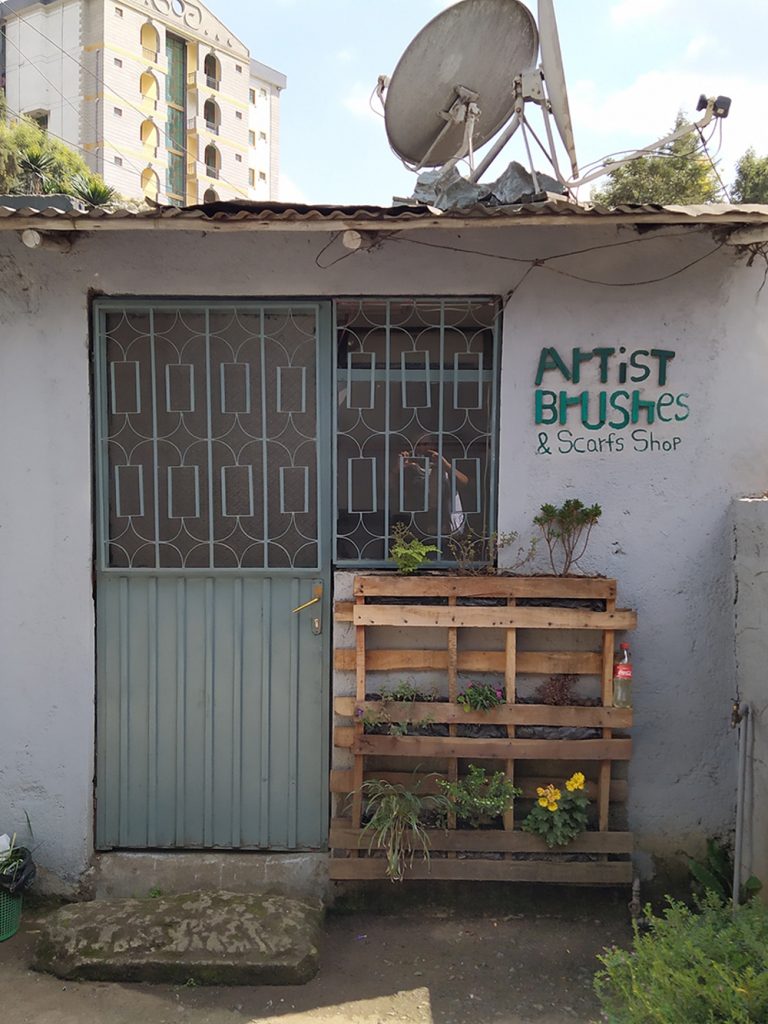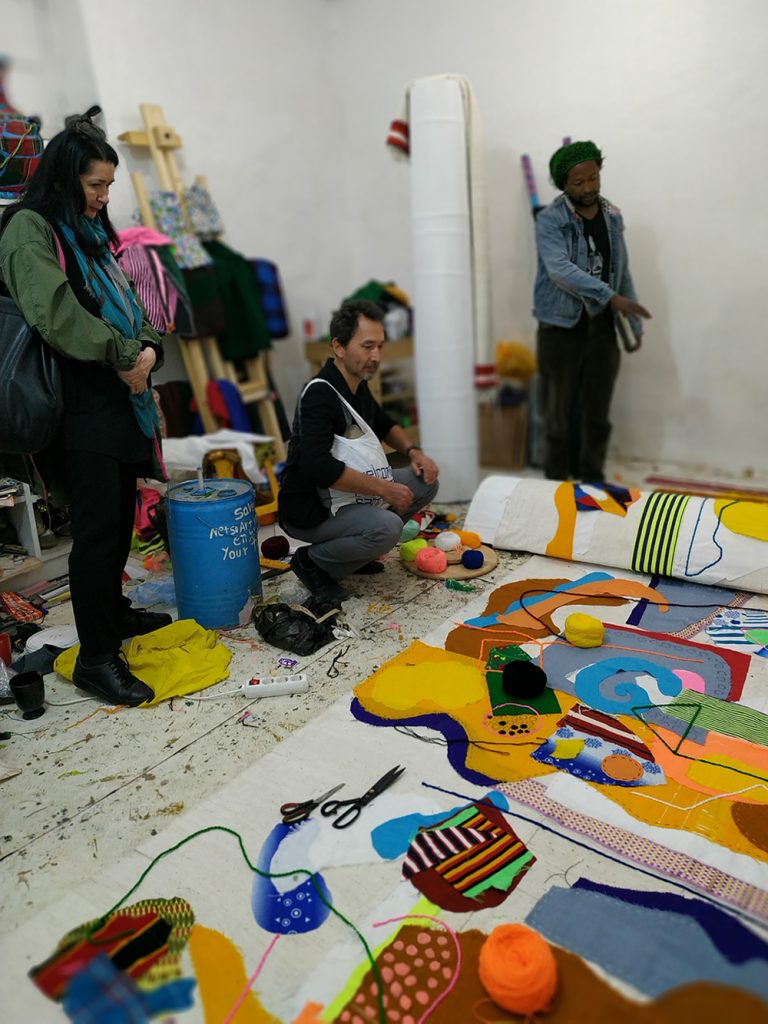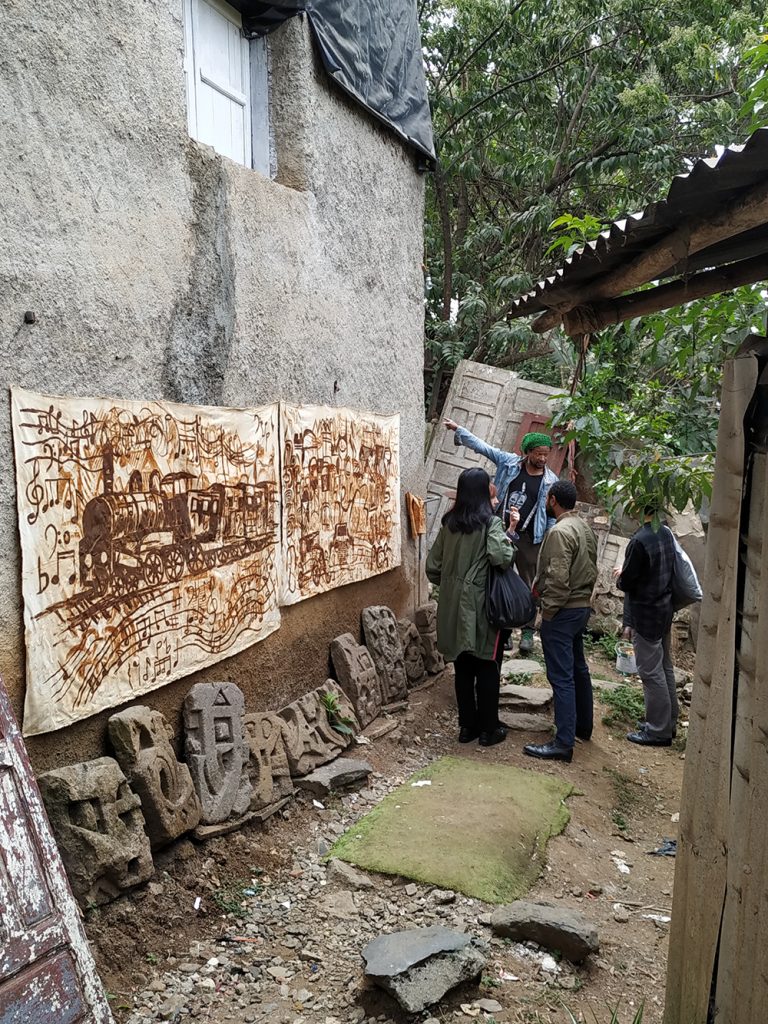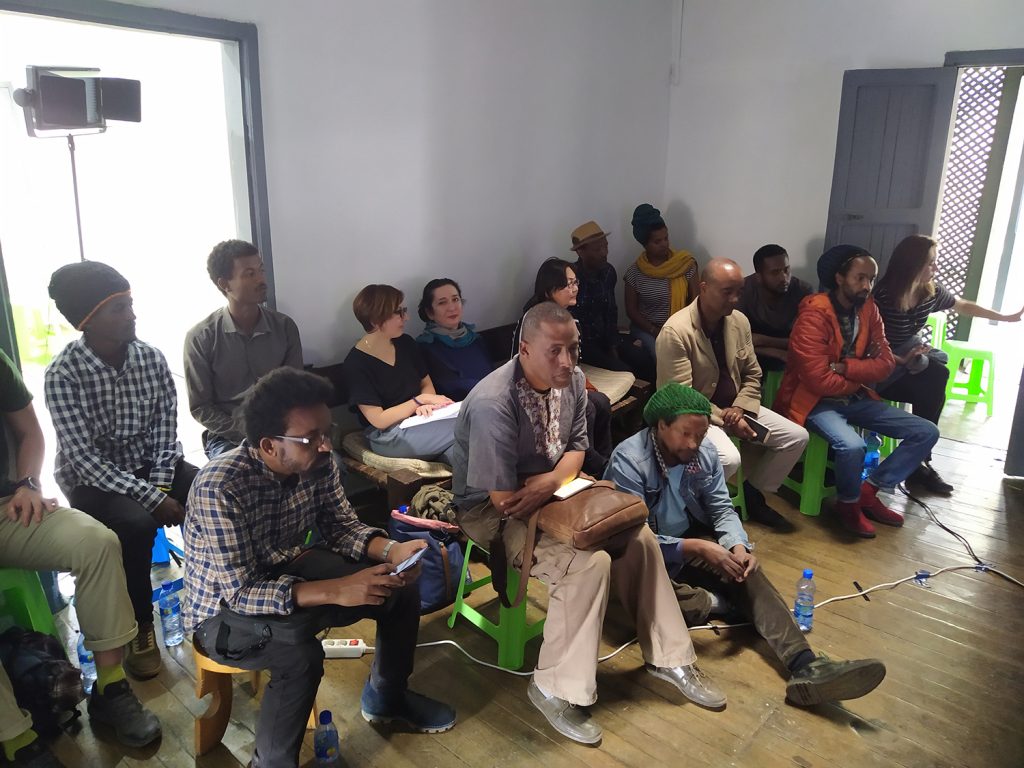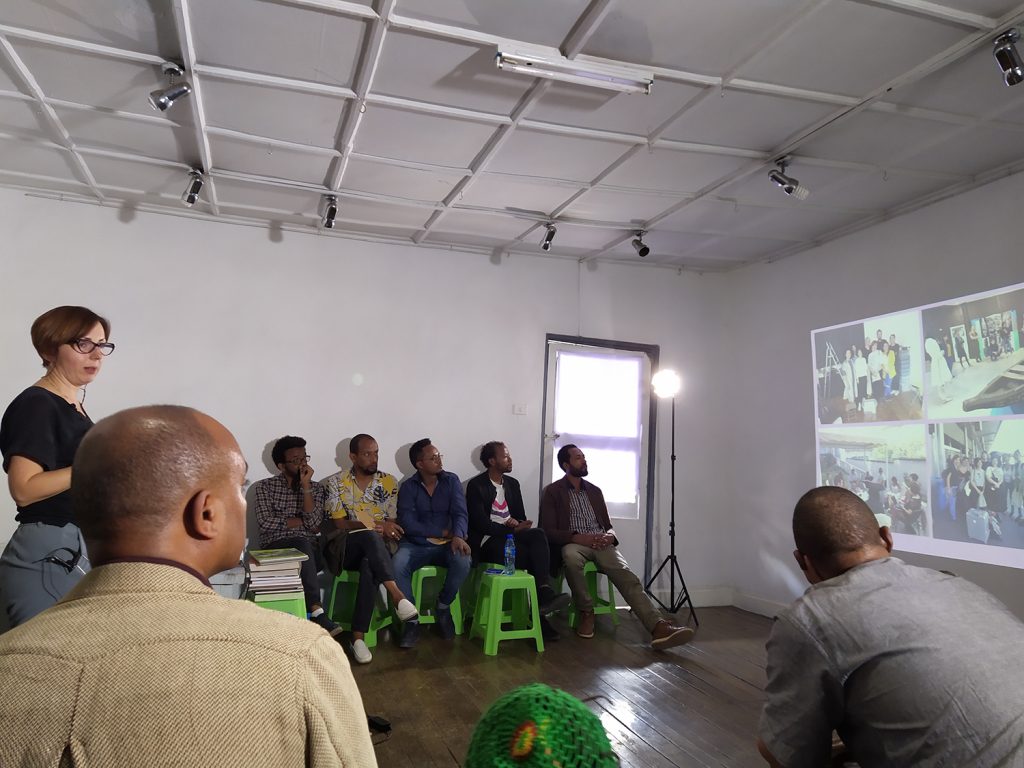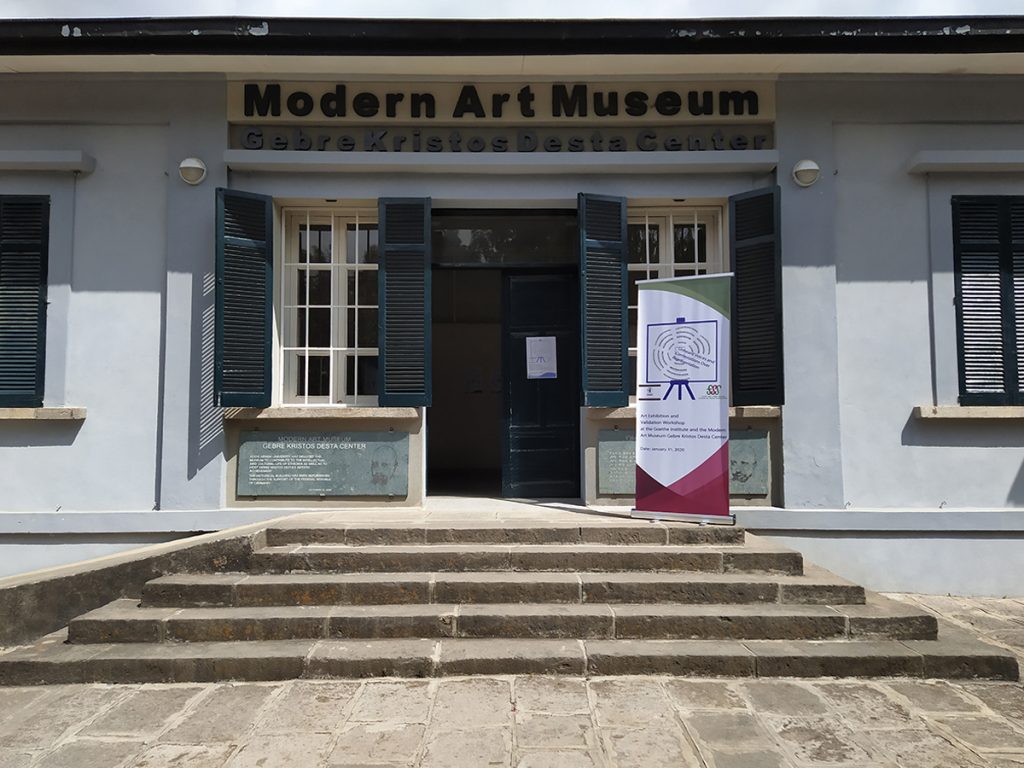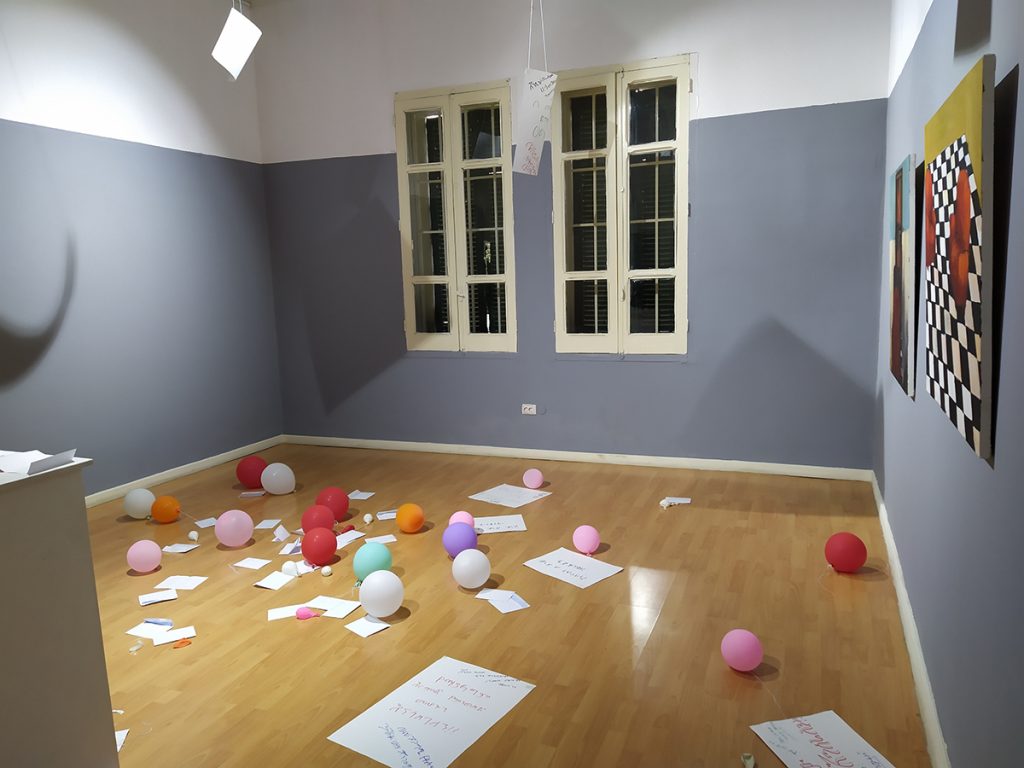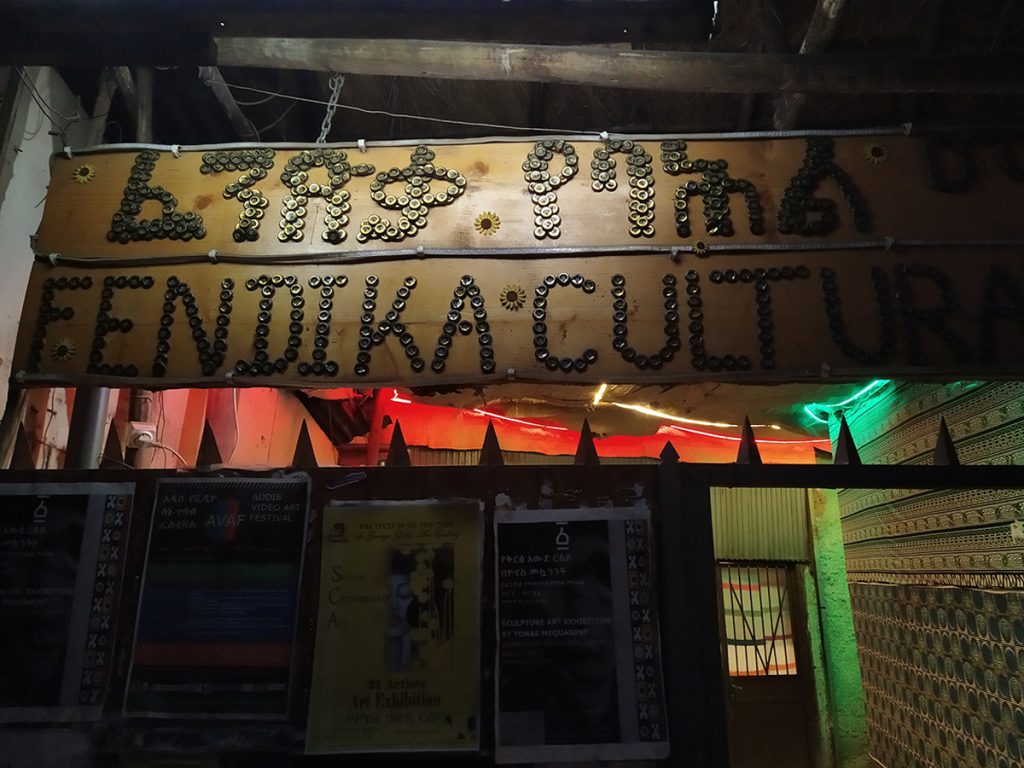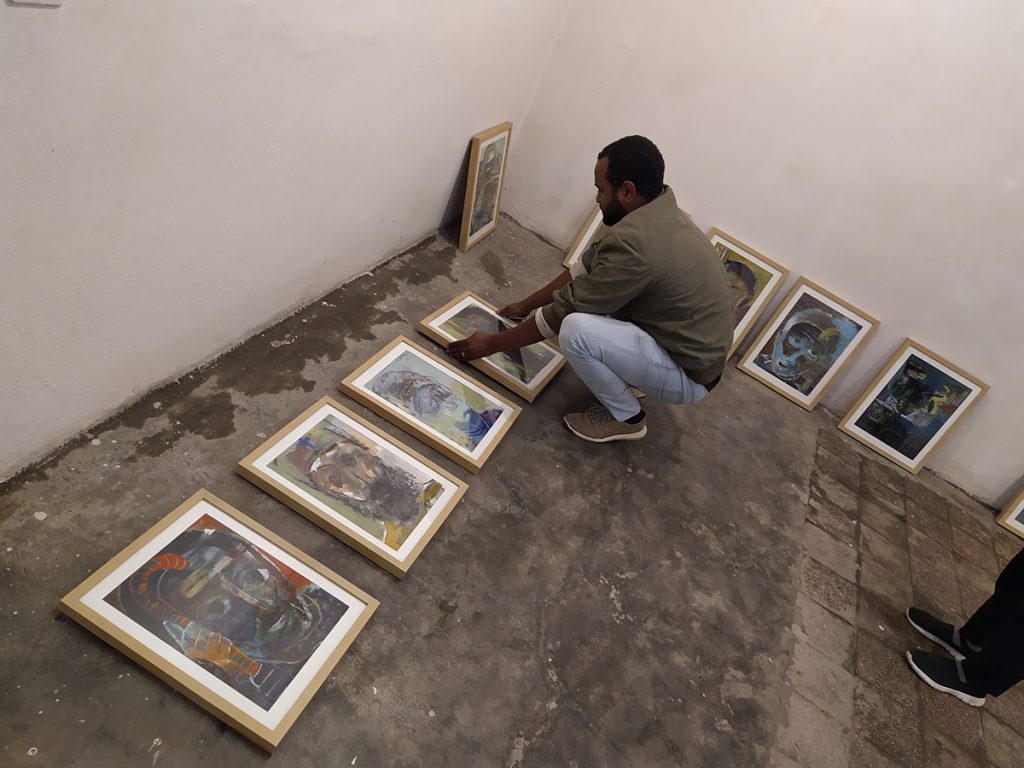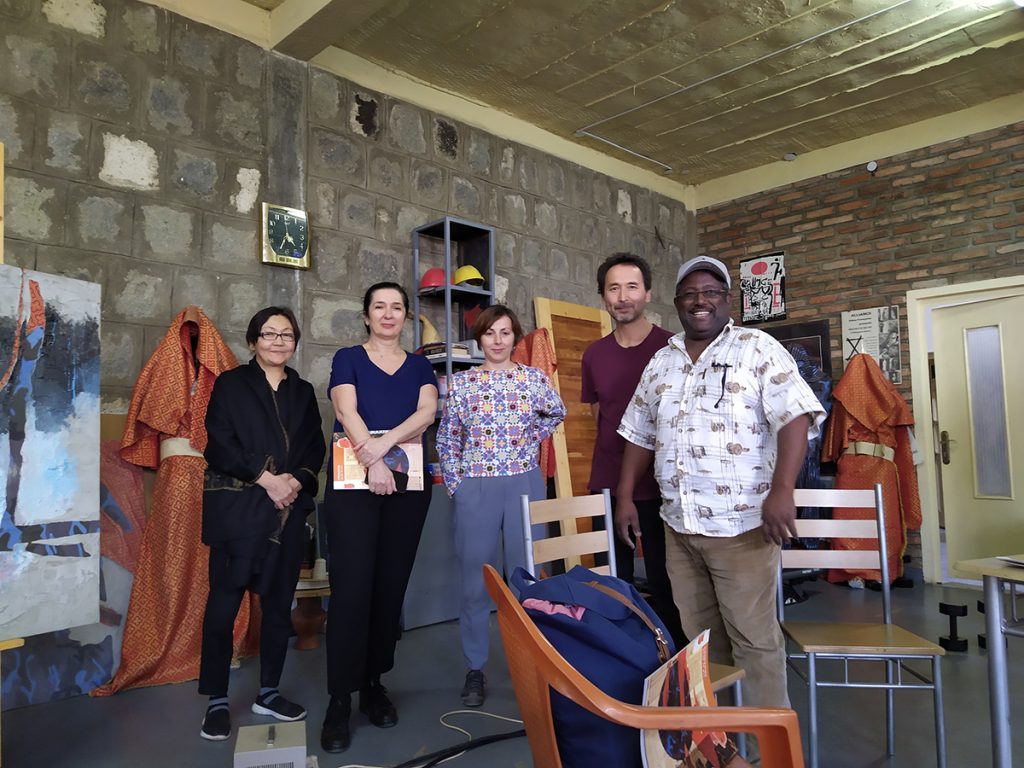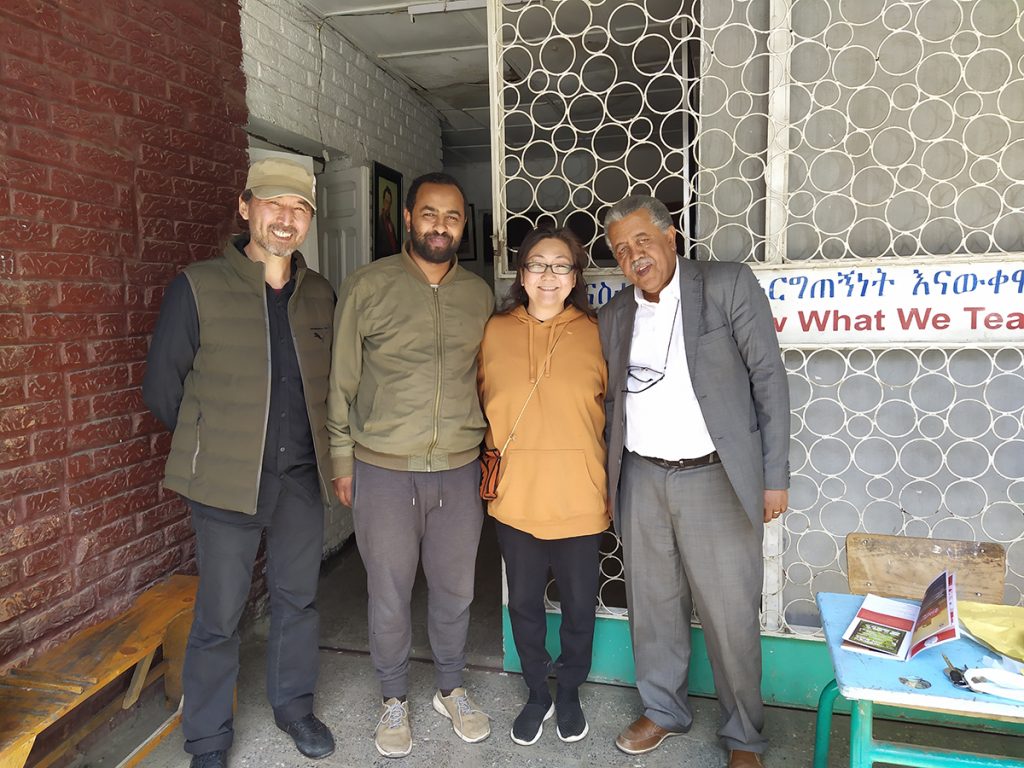Bishkek – Addis Ababa, notes from the journey through space and time
May, 2020
Addis Ababa
—
gulnara kasmalieva & muratbek djumaliev
Our trip to Ethiopia for a partner institutions meeting happened at the beginning of February 2020, at the time when coronavirus began to spread globally. It added some extreme flavour to our trip, but we did not expect that a real extreme for us would begin upon arrival to Addis Ababa airport when the border guards refused to grant us a tourist visa. After a long negotiation with officers, we realized that it was our fault. We were not careful in our research of internet sources, which were pointing out that citizens of Post Soviet countries are granted tourist visas upon arrival at the airport. Actually, we’ve missed important information: only Russians are allowed to obtain a visa upon arrival, and the rest of all Post Soviet countries were excluded from this list, for unknown reasons.
Finally, we were recommended to apply for an online visa despite official information from the Ministry of Foreign Affairs of Ethiopia that the visa takes three days to be made. But we were so exhausted by the 24 hours trip and endless negotiations that we were ready to be stuck in the airport to wait for our visas, just like Viktor Navorski (Tom Hanks), the protagonist in The Terminal movie. Having had a hard time finding Internet access in the lounge, we applied for an online visa at night, taking urgent photos of each other and passport copies on our smartphones and fell asleep immediately in the lounge…
We were awakened by a crowd of tourists arriving with early morning flights. Hopeless, we decided to check the status of our online visa applications, and, thank God – found the visa approval notice! The operation took just several hours! We passed passport control in a half an hour without any problems and were at the hotel by 9 in the morning, where we happily met Biljana Ciric, curator of the project As you go…
This case made us think about how despite globalization and multiple similarities of contexts, cultural ties between Africa and Central Asia are almost invisible today. Our knowledge about Ethiopia, fragmented and partly based on African diary written by Russian poet Nikolay Gumilev in 1913, and our memory of 1970-80s when African military pilots, and Ethiopians amongst them, walked down the streets of Frunze1Frunze is a former name of Bishkek during the Soviet period and the capital of Kyrgyz Republic.. We knew they were from a pilot school in a suburb of the Capital of Kyrgyz Republic. News on Soviet TV usually began with a story about official delegations from different countries, and it was often about the visits of African leaders. The words “friendship and collaboration”, “countries of non- alignment movement”2https://en.wikipedia.org/wiki/Non-Aligned_Movement, “dear comrade Mengistu Haile Mariam”3https://en.wikipedia.org/wiki/Mengistu_Haile_Mariam, “brotherly support”, were part of a routine discourse on the three Soviet TV channels. Later, during our study in Soviet art academies in Moscow and Saint Petersburg, we met African students and gained some knowledge about the real situation in Ethiopia at that time. The collapse of Socialist Bloc4https://en.wikipedia.org/wiki/Eastern_Bloc dramatically affected our histories, breaking already thin connections between our realities. The term “The Third World” became our commonality in one day. This somehow explains the absence of visible connections between Africa and Central Asia today: South-South traces are no more relevant in capitalism.
Limited intersections between these parts of the World raised a certain amount of ignorance and clichés. During our preliminary online research on Ethiopia in particular, there were many recommendations on the health situation there. These included the requirement of quite expensive yellow fever vaccination, strict hygiene on arrival and use of purchased drinking water only. The justification of this kind of “Western” attitude towards the local context is a common occurrence in our economics and culture. Our visit to the National Museum of Ethiopia raised controversial emotions of awareness of a unique place, and example of modernist architecture. At the same time, it made us dive into dark thoughts about the similarities of poor conditions of museums in both of our countries. Neither the famous Luci5https://en.wikipedia.org/wiki/Lucy_(Australopithecus), the proof of cradle of mankind in Africa in the collection of the museum in Addis Ababa, nor Golden Collection in State Historical Museum in Bishkek6https://24.kg/english/80929_Opening_of_Historical_Museum_in_Bishkek_repeatedly_postponed_/, the former Museum of Lenin, recently renovated but constantly postponed to open due to corruption scandals, could not hide a real sad situation with the official cultural policy in Ethiopia and Kyrgyzstan.
Mifte Zeleke, who is in charge, as a director and curator, of Guramayne Art Centre, became a guide during our four days in Addis. Guramayne is a typical space familiar to our art scene. There are several institutions of this type in Bishkek and one of them is our organization, ArtEast. It is grass rooted, low budget, co-working, exhibition space and art studios. Guramayne is located in a two-floor house made of volcanic stones and a mixture of mud and straw – our favourite ancient construction technology spread over huge territories of Africa and Asia. Our group, together with Biljana Ciric, initiator of the partner institution meeting in Addis Ababa, and Zdenka Badovinac, director of the Moderna galerija in Ljubljana, was introduced to artists in an art residency at Guramayne Art Centre. We were completely impressed by the art that we have seen there, especially by the work of Tamrat Gezahegne.
The Guramayne Centre became our space for discussions about visions of the project As you go…, about contexts of Balkans, Ethiopia, Central Asia and China. During the meeting, participants defined our main commonalities like the socialist legacy, non-alignment movement, new geopolitical settings, agents of our own culture. Days were busy with doing interviews, screenings of videos and partner’s presentations.
As you go… roads under your feet, towards the new future project and partner presentation, Guramayne Art Centre
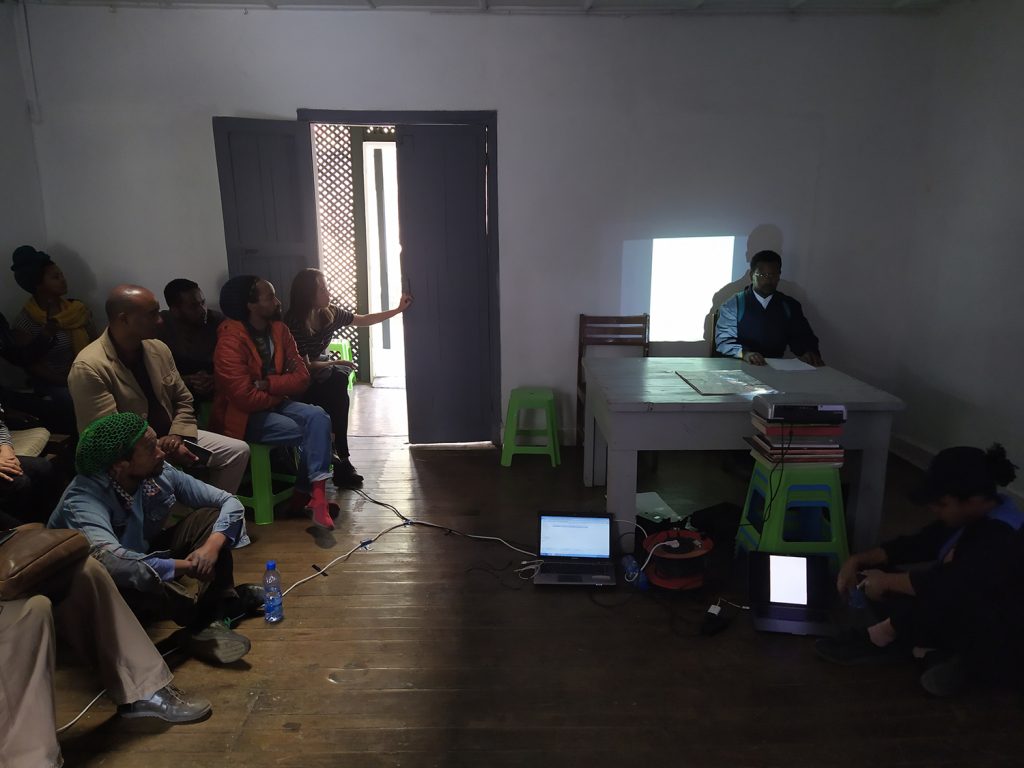
Performance by remarkable Ethiopian artist Robel Temesgen.
There was some time to visit an exhibition of contemporary art in Modern Art Museum of Gebre Kristos Desta Center7http://www.gebrekristosdestacenter.org/ named after Ethiopian modernist artist educated in Germany and University in the former Palace of Haile Selassie8https://en.wikipedia.org/wiki/National_Palace_(Ethiopia).
Modern Art Museum
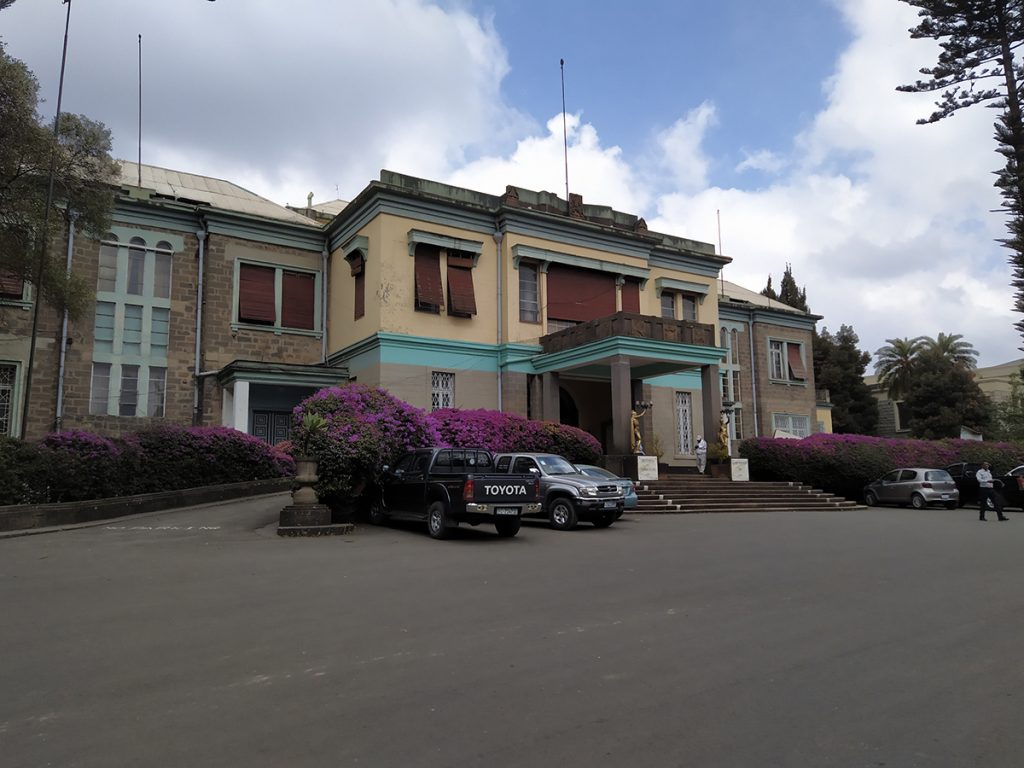
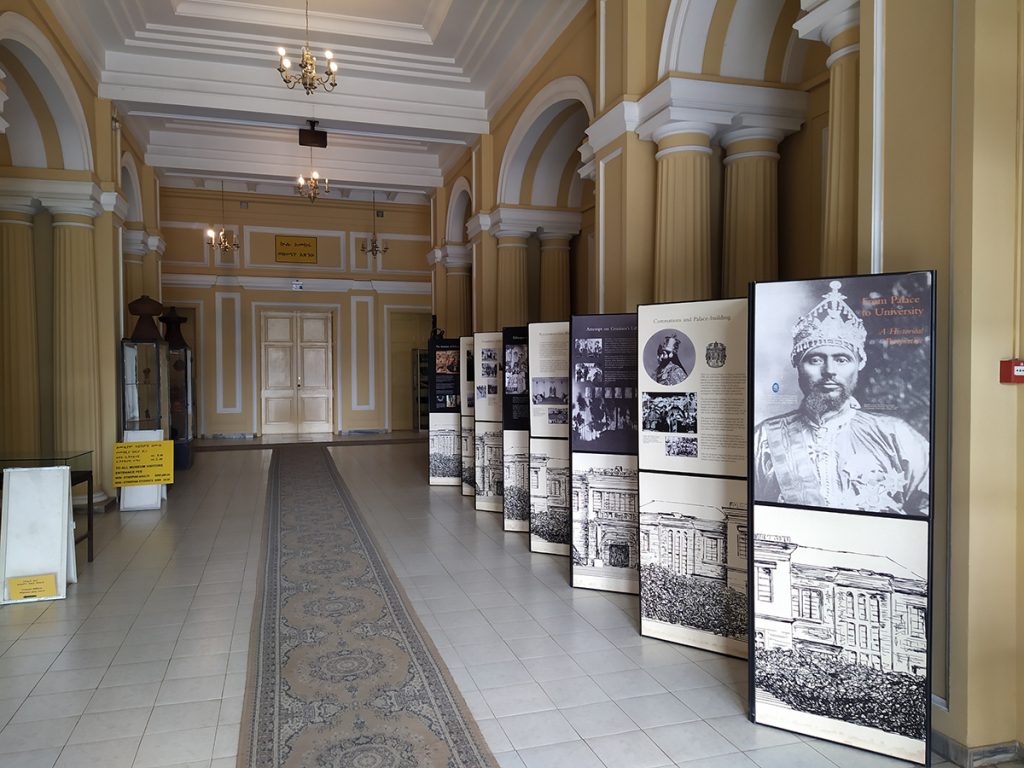
Guenete Leul Palace
Visiting the Art Academy in Addis Ababa reminded us of official art education in Kyrgyzstan, based on a mixture of western modernist style and “socialist realism” remained since Soviet time. This kind of education is typical for most Post-Soviet territory, except Baltic countries. During the last 30 years, art education in Kyrgyzstan still does not accept contemporary art and western post-war version of art history.
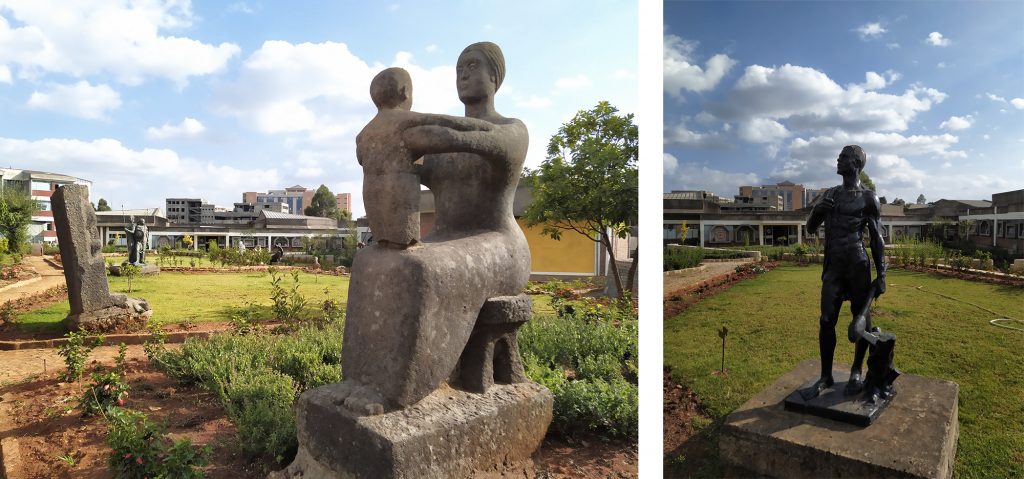
Addis Ababa Art Academy
On the way to the next meeting, we managed to find a time to visit a local bazaar, taste the national dish “injera”9https://en.wikipedia.org/wiki/Injera and, of course, famous Ethiopian coffee!
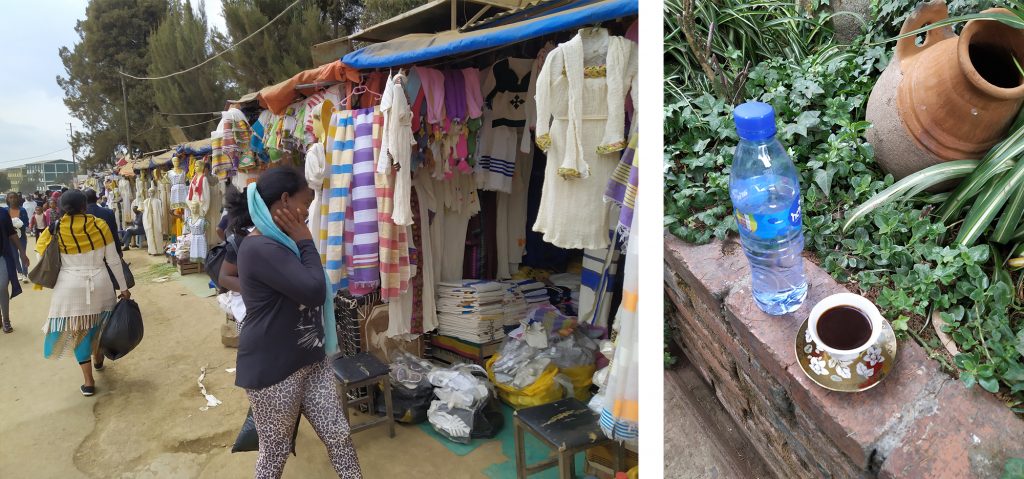
Local Bazaar
In the late evening, we visited Fendika Cultural Center10https://fendika.org/about. It is a combination of a jazz club, exhibition space and a pub, with the high quality of music and visual art. We went there twice: the first time with our group, to listen to jazz, and the second time with Mifte Zeleke, just to look at the process of exhibition installation. We had a chance to be at the preview of Surafel Amare panting solo show.
During our conversation with Mifte, he mentioned that Guramayne Art Centre will most probably be demolished, due to its positioning on the riverside, one of the areas that are a part of the new controversial plan initiated by Prime Minister Abiy Ahmed11https://www.climatechangenews.com/2020/03/12/addis-ababa-riverside-project-gives-priority-development-resident. Officially called Beautifying Sheger12https://en.wikipedia.org/wiki/Beautifying_Sheger, the project runs along the rivers Entoto and Akaki, developing 56km of green spaces. The project aims to clean up these rivers, make the city a model of green development in the process, construct concrete walls, bridges and plant regular parks with a new infrastructure. But it is still far from the real sustainable development of the city infrastructure, due to many reasons. One of them is a critical situation with the pollution of the river and seasonal difference of the flow. Another big concern is ignorance of the voice of inhabitants of the riverside.
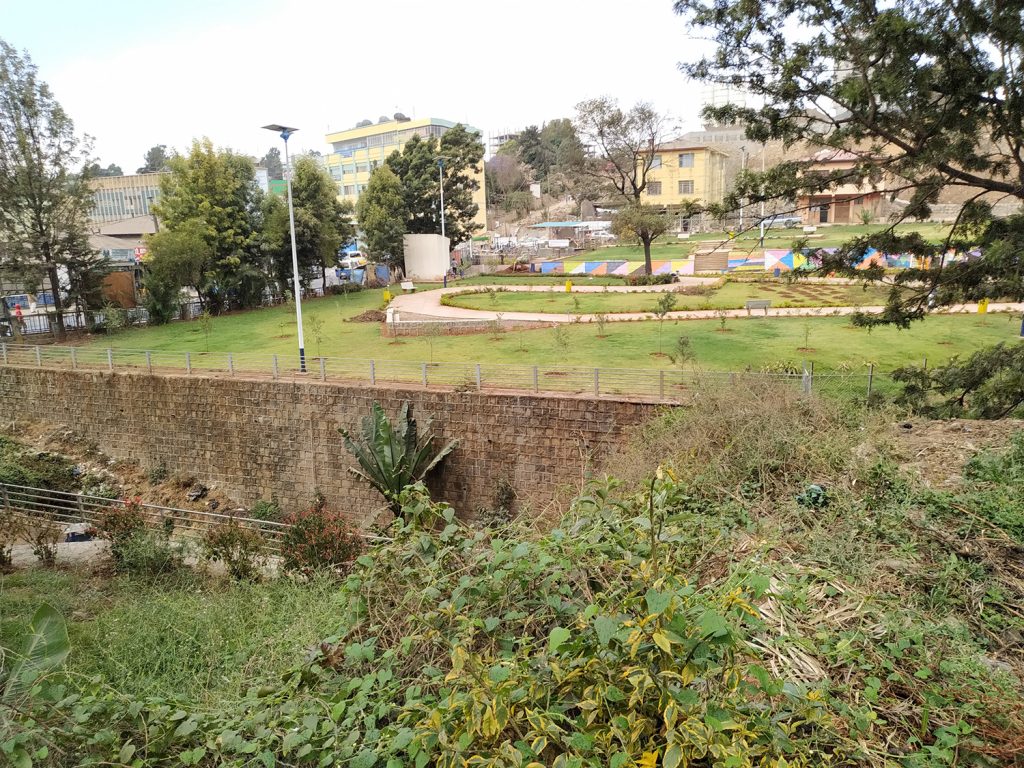
Riverside development area next to the Guramayne Art Centre
Our group saw the construction of the riverside during the long walk from the National Museum with Helen Zeru, an impressive young performance artist. An endless green iron fence along the road interrupted by the standard white plate of China Aid13https://en.wikipedia.org/wiki/China_Aid. 12km section of the 56km project, as the first phase of the project, will be built by the China Communications Construction Company (CCCC)14https://en.wikipedia.org/wiki/China_Communications_Construction with a grant secured from the Chinese Government.
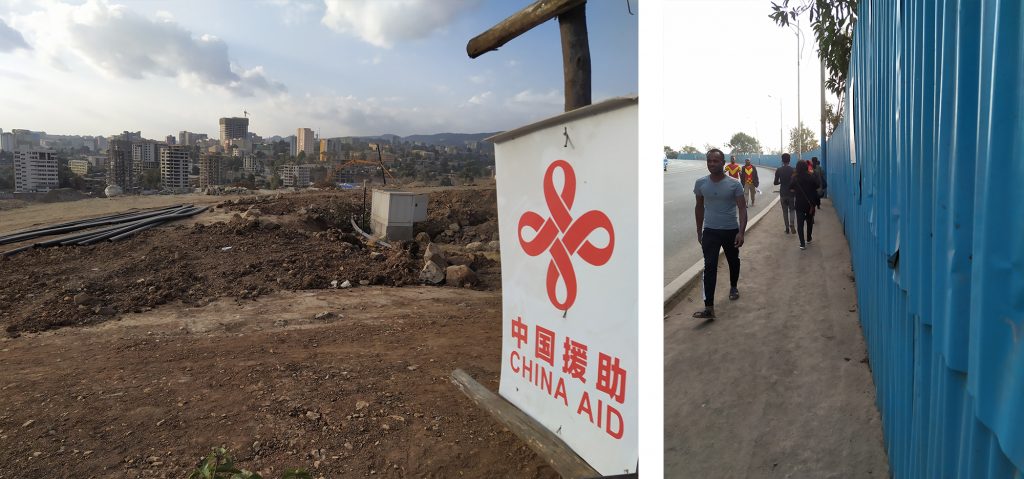
Riverside construction area
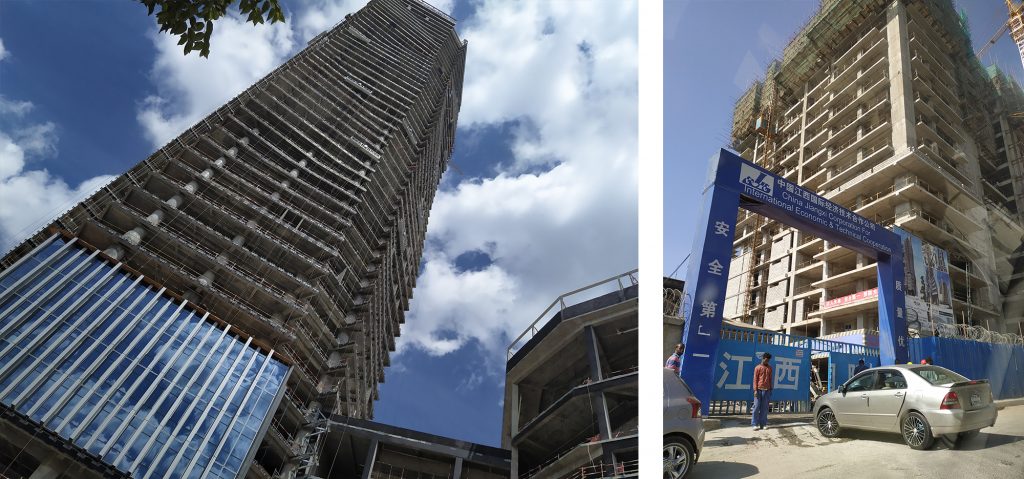
Other ambitious plans to erect the highest skyscraper in Africa, invested and developed by China Jiangxi Corporation15https://en.wikipedia.org/wiki/Jiangxi_International for International Economic and Technical Cooperation16https://en.wikipedia.org/wiki/China_Shandong_International_Economic_%26_Technical_Cooperation_Group.
This situation is now typical for Kyrgyzstan too. The building of the roads in our country is also mainly invested in, and implemented by Chinese companies. This often does not follow basic ecological terms. For instance, Bishkek city administration has cut down thousands of trees just to enlarge city roads, without notification or discussion with the public. Ironically, by the warning of urban activists, it would not solve the problem of traffic jams. By statistics, enlarging roads would only increase the number of cars in the city. Besides, trees that have been planted in the city over the last century solved the problems of semi-desert climate and protected against city pollution. This movement of planting trees in Bishkek began at the end of the 19th century, during the colonization of Central Asia by the Russian empire. It was obligatory for every citizen of the town to plant and take care of 25 trees nearby its house. Regular planning of the county town, including parks and the irrigation system, was established in the late 19th and early 20th century. This process continued in Soviet time by building new parks and botanical gardens.
The more careful and thoughtful case of development of the riverside is the project of Zoma museum. It is a private project and it looks like a very well organized oasis in a quite chaotic life and landscape of Addis Ababa.
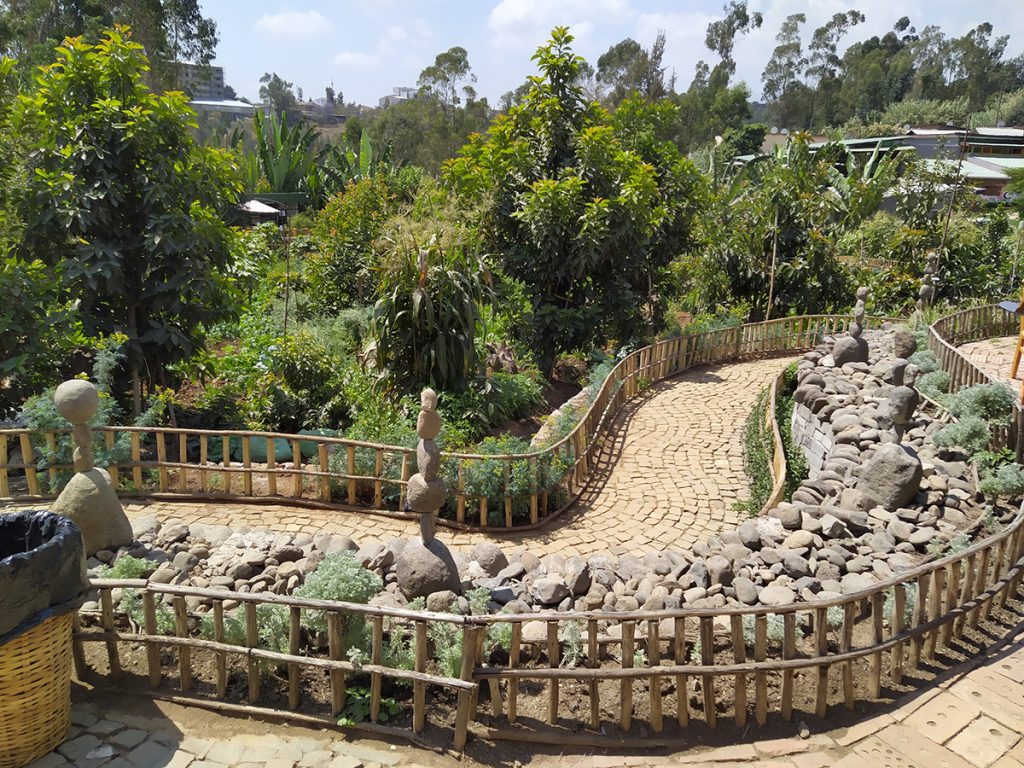
Zoma Museum
The owners of the museum, curator Meskerem Asseguedand artist Elias Sime completely changed the landscape of polluted riverside: they took out tons of waste from the ground and brought new soil to plant a garden. They followed principles of permaculture17https://en.wikipedia.org/wiki/Permaculture, our favourite philosophy of working with nature. Thoughtfully organized irrigation canals, planted bushes, herbs, vegetables and fruits trees, buildings including a gallery, café, library, museum shop, a school for children, amphitheatre and cowshed are parts of the ecosystem. The style of the buildings is based on vernacular architecture, the surface made of mud and straw in a very capricious manner. Together with landscape design, all have some special charm.
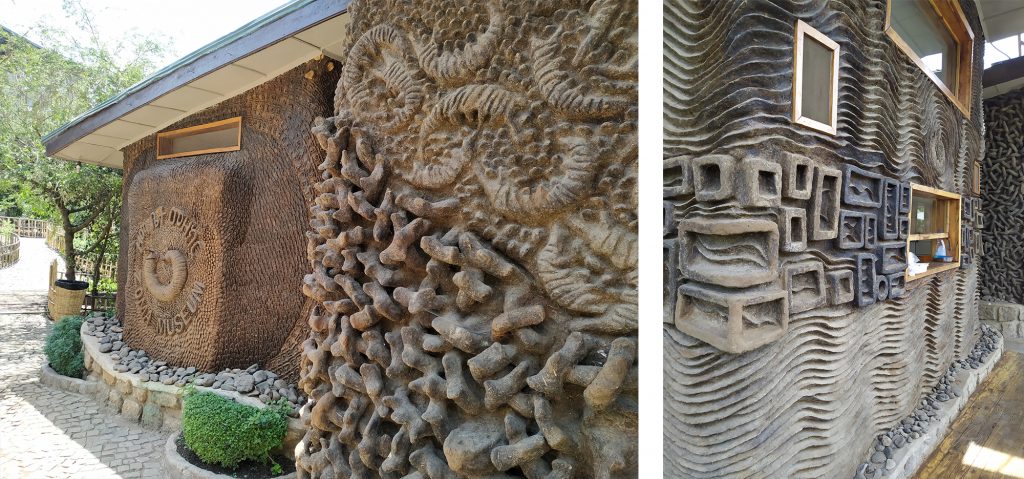
Zoma Museum
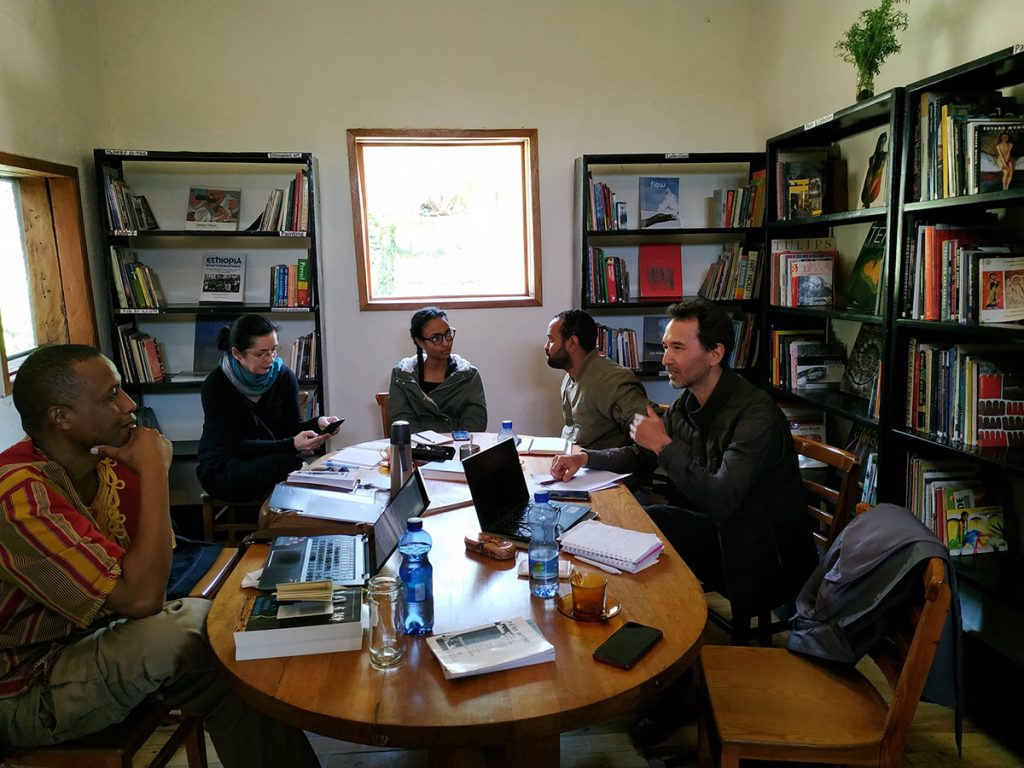
Partners meeting in Zoma Museum library with Sarah Bushra and Sinkneh Eshetu
We had our last group meeting in a cosy library with Sinkneh Eshetu, the remarkable Ethiopian writer and Sarah Bushra, a multi-disciplinary artist and writer. Having had lunch in the Museum’s cafe, it was possible to order tee with fresh Lemon Verbena directly cut from the garden – a combination of tropical and mountainous climate in Addis Ababa allowed growing multip plants almost all year round.
Our last days were surprisingly spiced up with Bekele Mekonnen and Eshetu Tiruneh Feleke, two Ethiopian peers from Surikov art academy18http://www.china.org.cn/top10/2014-02/07/content_31394806_3.htm in the 1980s. Both of them succeeded in art but in different directions. One of them is a successful sculptor and performance artist; another one is a former employee of the Ministry of Culture and currently dedicated director of Enlightenment Art Academy.
The meeting was emotional, nostalgic and thoughtful. It was like a real journey through space and time. Interviews with Bekele and Eshetu allowed us to learn more about the post-socialist history of Ethiopia, about their challenges and desires.
Gulnara Kasmalieva and Muratbek Djumaliev are artists and curators from Bishkek, Kyrgyzstan.
[1] Frunze is a former name of Bishkek during the Soviet period and the capital of Kyrgyz Republic.
[2] https://en.wikipedia.org/wiki/Non-Aligned_Movement
[3] https://en.wikipedia.org/wiki/Mengistu_Haile_Mariam
[4] https://en.wikipedia.org/wiki/Eastern_Bloc
[5] https://en.wikipedia.org/wiki/Lucy_(Australopithecus)
[6] https://24.kg/english/80929_Opening_of_Historical_Museum_in_Bishkek_repeatedly_postponed_/
[7] http://www.gebrekristosdestacenter.org/
[8] https://en.wikipedia.org/wiki/National_Palace_(Ethiopia)
[9] https://en.wikipedia.org/wiki/Injera
[10] https://fendika.org/about
[12] https://en.wikipedia.org/wiki/Beautifying_Sheger
[13] https://en.wikipedia.org/wiki/China_Aid
[14] https://en.wikipedia.org/wiki/China_Communications_Construction
[15] https://en.wikipedia.org/wiki/Jiangxi_International
[16] https://en.wikipedia.org/wiki/China_Shandong_International_Economic_%26_Technical_Cooperation_Group
[17] https://en.wikipedia.org/wiki/Permaculture
[18] http://www.china.org.cn/top10/2014-02/07/content_31394806_3.htm


